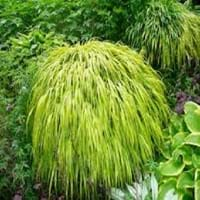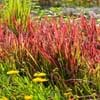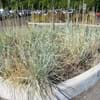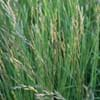Life Span
Perennial
Annual
Origin
Japan
Central America, South America
Types
Not Available
Bush Beans, Pole Beans
Number of Varieties
Not Available
Habitat
meadows, Riverbanks, Wet Woods
Cultivated Beds
USDA Hardiness Zone
5-9
Not Available
AHS Heat Zone
9 - 5
Not Available
Sunset Zone
1a, 1b, 2a, 2b, 3a, 3b, 4, 5, 6, 7, 8, 9, 10, 11, 12, 13, 14, 15, 16, 17, 18, 19, 20, 21, 22, 23, 24
A1, A2, A3, H1, H2, 1a, 1b, 2a, 2b, 3a, 3b, 4, 5, 6, 7, 8, 9, 10, 11, 12, 13, 14, 15, 16, 17, 18, 19, 20, 21, 22, 23, 24
Habit
Clump-Forming
Vining/Climbing
Flower Color
Blue Violet
Lavender
Flower Color Modifier
Bicolor
Bicolor
Fruit Color
Purple
Purple
Leaf Color in Spring
Yellow, Green, Light Green
Green, Purple
Leaf Color in Summer
Light Green
Green
Leaf Color in Fall
Orange, Yellow green, Orange Red
Green
Leaf Color in Winter
Green, Dark Green, Not Available
Not Available
Plant Season
Spring, Summer, Fall
Spring, Summer, Fall
Sunlight
Full Sun, Partial Sun, Partial shade
Full Sun
Type of Soil
Loam
Loam, Sand
The pH of Soil
Acidic, Neutral
Neutral, Alkaline
Soil Drainage
Well drained
Well drained
Bloom Time
Late Summer, Early Fall, Fall
Indeterminate
Tolerances
Dry soil, Shallow soil
Drought
Where to Plant?
Ground
Container, Ground, Pot
How to Plant?
From Rhizomes
Seedlings
Plant Maintenance
Medium
Medium
Watering Requirements
Keep ground moist
Do Not over Water, Requires regular watering, Water evenly
In Summer
Lots of watering
Lots of watering
In Spring
Consistently
Moderate
In Winter
Adequately
Average Water
Soil pH
Acidic, Neutral
Neutral, Alkaline
Soil Type
Loam
Loam, Sand
Soil Drainage Capacity
Well drained
Well drained
Sun Exposure
Full Sun, Partial Sun, Partial shade
Full Sun
Pruning
Prune grass to maintain level, Prune if you want to improve plant shape
Remove damaged leaves, Remove dead branches, Remove dead leaves
Fertilizers
organic fertlizers
5-10-10 fertilizer
Pests and Diseases
Not Available
Alternaria Leaf Spot, Anthracnose, Aphids, Armyworm, Bacterial Blight
Plant Tolerance
Shade areas, Shallow soil, Wet Site
Drought
Flowers
Insignificant
Showy
Flower Petal Number
Single
Single
Foliage Texture
Medium
Coarse
Foliage Sheen
Matte
Matte
Attracts
Ants, Beetles, Caterpillar
Not Available
Allergy
allergic conjunctivitis, Asthma, Rash
Not Available
Aesthetic Uses
Beautification, Ground Cover
Not Available
Beauty Benefits
Not Available
Beautiful Skin
Environmental Uses
Provides ground cover, Shadow Tree
Fixes Nitrogen
Medicinal Uses
Acne, Aging, Laxative
Cancer, Diuretic, Homeopathy, Hypotensive, Miscellany
Part of Plant Used
Leaves
Leaves, Seedpod, Seeds
Other Uses
Can be made into a herbal tea, Showy Purposes
Used for making brown dye, Used in biomass, Used in in reviving woollen fabrics
Used As Indoor Plant
Sometimes
Yes
Used As Outdoor Plant
Yes
Yes
Garden Design
Container, Edging, Mixed Border, Rock Garden / Wall, Water Gardens
Container, Edible, Herb, Vegetable, Vine
Botanical Name
HAKONECHLOA macra 'Aureola'
PHASEOLUS vulgaris 'Purple King'
Common Name
Golden Japanese Forest Grass, Hakone Grass
String bean, Field bean, French bean
In Hindi
जापानी वन घास
String Bean
In German
Japanische gras
Bohne
In French
Forêt herbe japonaise
Haricot vert
In Spanish
forestales hierba japonesa
String Bean
In Greek
Ιαπωνικά γρασίδι δάσος
Αμπελοφάσουλο
In Portuguese
floresta grama japonês
Feijão de corda
In Polish
Japoński las lato
Fasolka szparagowa
In Latin
Forest gramina Italica
Gloria Bean
Phylum
Angiosperms
Magnoliophyta
Class
Monocots
Magnoliopsida
Genus
Hachanechloa
Phaseolus
Clade
Angiosperms
Angiosperms, Eudicots, Rosids
Tribe
Not Available
Phaseoleae
Subfamily
Arundinariinae
Faboideae
Number of Species
Not Available
Not Available
Importance of Japanese Forest Grass and String Bean
Want to have the most appropriate plant for your garden? You might want to know the importance of Japanese Forest Grass and String Bean. Basically, these two plants vary in many aspects. Compare Japanese Forest Grass and String Bean as they differ in many characteristics such as their life, care, benefits, facts, etc. Every gardener must at least have the slightest clue about the plants he wants to plant in his garden. Compare their benefits, which differ in many ways like facts and uses. The medicinal use of Japanese Forest Grass is Acne, Aging and Laxative whereas of String Bean is Cancer, Diuretic, Homeopathy, Hypotensive and Miscellany. Japanese Forest Grass has beauty benefits as follows: Not Available while String Bean has beauty benefits as follows: Not Available.
Compare Facts of Japanese Forest Grass vs String Bean
How to choose the best garden plant for your garden depending upon its facts? Here garden plant comparison will help you to solve this query. Compare the facts of Japanese Forest Grass vs String Bean and know which one to choose. As garden plants have benefits and other uses, allergy is also a major drawback of plants for some people. Allergic reactions of Japanese Forest Grass are allergic conjunctivitis, Asthma and Rash whereas of String Bean have Not Available respectively. Having a fruit bearing plant in your garden can be a plus point of your garden. Japanese Forest Grass has no showy fruits and String Bean has showy fruits. Also Japanese Forest Grass is not flowering and String Bean is not flowering . You can compare Japanese Forest Grass and String Bean facts and facts of other plants too.





